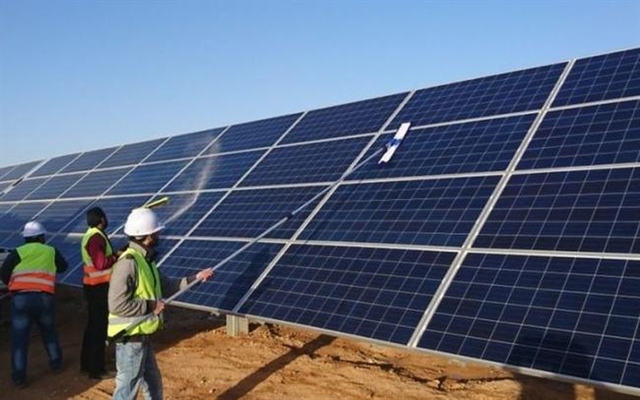 Economy
Economy


|
| A wind power farm in Phú Yên Province. Renewable power developed strongly in Việt Nam in recent years, which was putting pressure on the power system and might need to be cut in the next five-year period. — Photo thuongtruong.com.vn |
HÀ NỘI — It is likely that Việt Nam will have to reduce renewable energy sources in the next five years, as booming development in recent years was weighing on the power system, according to a recent report by the Institute of Energy.
The report showed that Việt Nam’s power system had a total power generation capacity of around 69 GW, including 21 GW of coal-fired power, 21 GW of hydroelectricity, 9 GW of gas and oil – fired power, 17 GW of solar power, less than 1 GW each of wind power, biomass and imported energy.
The power generation capacity increased by an average of 12.9 per cent per year, of which, coal-fired power increased at the highest rate of 18 per cent per year, followed by hydropower at 9.2 per cent.
Solar and rooftop solar power saw dramatic rises in 2019-20. From a very modest level at the beginning of 2018, solar and wind power energy now accounts for nearly 26 per cent of the system’s total capacity. Meanwhile, gas and oil – fired power have not seen many new developments over the past decade.
The institute said that renewable energy has developed strongly in recent years, driven by the Government’s encouraging policies under the Prime Minister’s Decision No 11/2017/QĐ-TTg dated April 11, 2017 for solar power and the Decision No 39/2018/QĐ-TTg dated September 10, 2018 for wind power.
The total solar capacity, including rooftop solar power, was estimated at 16,500 MW as of the end of December 2020, accounting for 24.1 per cent of the total capacity of the power generation system. Wind power capacity was estimated at 567 MW, or 0.86 per cent of the total power generation capacity.
However, these renewable energy generation sources were located unevenly, mostly in provinces in the central and southern regions where there is huge potential for solar and wind power such as Bình Định, Khánh Hòa, Phú Yên, Bình Thuận, Ninh Thuận, An Giang and Long An.
The capacity of renewable energy generation sources approved to be included in the planning to 2025 was estimated to total 25,500 MW, including 13,900 MW of farm solar power and 11,500 MW of wind power and excluding rooftop solar.
This means that about 5,000 MW of solar power and 6,144 MW of wind power within the planning had not become operational.
As there was no specific information about the policies for renewable energy development for the period after October 2021, the progress of these projects remained uncertain, the institute said.
The sudden increase in renewable energy supply has led to a number of problems in the operation of the grid, such as local overloading, full loading and increasing the number of the system restarts and adjustments. In addition, the generation of renewable sources was unstable and heavily dependent of the weather conditions.
This might force Việt Nam to reduce renewable energy generation in the next five years, the institution said, adding that the solar power output which failed to be put into use was estimated at 354 million kWh last year.
Việt Nam Electricity (EVN) estimated the renewable power output which might fail to be put into use at 1.68 billion kWh this year and this sum must be reduced to ensure the safety for the power system.
According to EVN’s report, another 5,400 MW of wind power, 300 MW of solar power and 3,000 MW of coal-fired power would be put into the system by the end of this year, bringing the total capacity of the power system to nearly 80 GW. This meant that wind and solar power would account for seven per cent and 22 per cent of the system, respectively.
The increase in solar and wind power supply would weigh on the power system, especially the transmission system in the central and southern regions and might force Việt Nam to reduce this source in the 2021-25 period.
According to the National Load Dispatch Centre, the power generation output which might be reduced in the second half of this year was estimated at 1.7 billion kWh.
The amount of renewable energy output which must be reduced in July – September was estimated at an average of 210 million kWh per month and 378 kWh per month in October-December when the rainy reason hits the central and the southern regions, which would push up hydroelectricity output. — VNS




